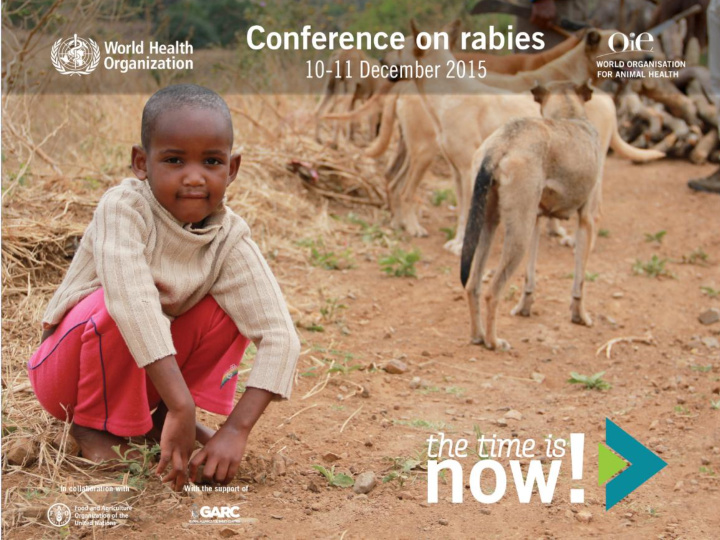



Dr Emmanuel A. Mpolya Lecturer, Nelson Mandela African Institution of Science and Technology (NM-AIST), Arusha, Tanzania Maison de la Paix - Geneva, Switzerland - 10 – 11 December 2015
Introduction Tanzania Key features o Mainland and island o > 150 workers (vet + health) o > 100 vet and health units o 28 districts o ~ 10 million people
Project Timeline Mobile� Phone� Final� MDV� Surveillance� campaigns� ongoing� started:� 71,306� (70%)� dogs� vacc'd� Vaccina ons� Project� Launched� con nued:� 68,000� in� Tanzania:� 56,216� (62%)� dogs� vacc'd� (50%)� dogs� vacc'd� � No� Large� Rabies� Control� Programme� 2007� 2008� 2009� 2010� 2011� 2012� 2013� 2014� 2015� 2016� Vaccina ons� Project� Offic ally� con nued:� 83,083� Launched� Vaccina ons� Interna onally,� (80%)� dogs� vacc'd� con nued:� 65,342� Trainings� in� (63%)� dogs� vacc'd� Tanzania�
Human deaths have declined dramatically over the project period and with increasing dog vaccination coverage 100 Human Deaths 20 % Dogs Vaccinated 80 Human Rabies Deaths % Dogs Vaccinated 15 60 10 40 5 20 0 0 2011 2012 2013 2014 2015 Project Years
Human PEP use has declined with the implementation of effective mass dog vaccination campaigns 3.0 PEP Doses & Delivery Total PEP Intradermally 2.5 Intramuscularly PEP Doses (in thousands ) 2.0 • Widespread shift from 1.5 intramuscular to intradermal 1.0 administration of PEP resulting in cost savings 0.5 0.0 2011 2012 2013 2014 2015 Project Years
Elimination of rabies in Pemba Island Total Cost of PEP (USD) Total Cost of Vaccination (USD) 0 10000 30000 50000 70000 0 50000 150000 250000 Kilombero Economic Findings Ilala Rufiji Masasi Newala Newala Liwale Average Cost per PEP (USD) Cost of Vaccination per Animal (USD) 0 10 20 30 40 50 0 5 10 15 20 Lindi Rural Lindi Rural Mkuranga Newala Kinondoni Masasi
Successes & Lessons Learned LESSONS LEARNED SUCCESSES • First large scale programme to • Focus: a management unit with eliminate rabies in Tanzania; a focused responsibilities is key to blueprint for local policy makers project success • Elimination of human and dog • Close cooperation of all key rabies in Pemba sectors and stakeholders • Mobile phone surveillance involved is important increased data availability • Estimations of dog populations • Reduction of human and dog must adapt according to rabies in Mainland Tanzania improved information • Increased accessibility of PEP • Proper data management is vital across southern Tanzania averted for smooth project operation many deaths • Alternative data collection • Achieving 70% dog vaccination technologies (eg. Mobile coverage even in remote areas Phones) can be revolutionary • One – Health platform (formation of Zoonotic Diseases Unit where rabies is more visible than before
Acknowledgments Tribute to Dr. E Mbunda International National • WHO Country Office, TZ • Bill and Melinda Gates • Ministry of Livestock and Foundation (BMGF) Fisheries Development, TZ • World Health Organization • Ministry of Health and Social Welfare, TZ (WHO) - Headquarters • Directorate of Veterinary • University of Glasgow (UoG) Services, TZ • • UBS Optimus Foundation Tanzania Veterinary Laboratory Agency, TZ • Sokoine University of Agriculture (SUA), TZ • Ifakara Health Institute (IHI), TZ
Dr. Emmanuel A. Mpolya Lecturer Nelson Mandela African Institution of Science and Technology (NM-AIST) Arusha, Tanzania emmanuel.mpolya@nm-aist.ac.tz
Recommend
More recommend